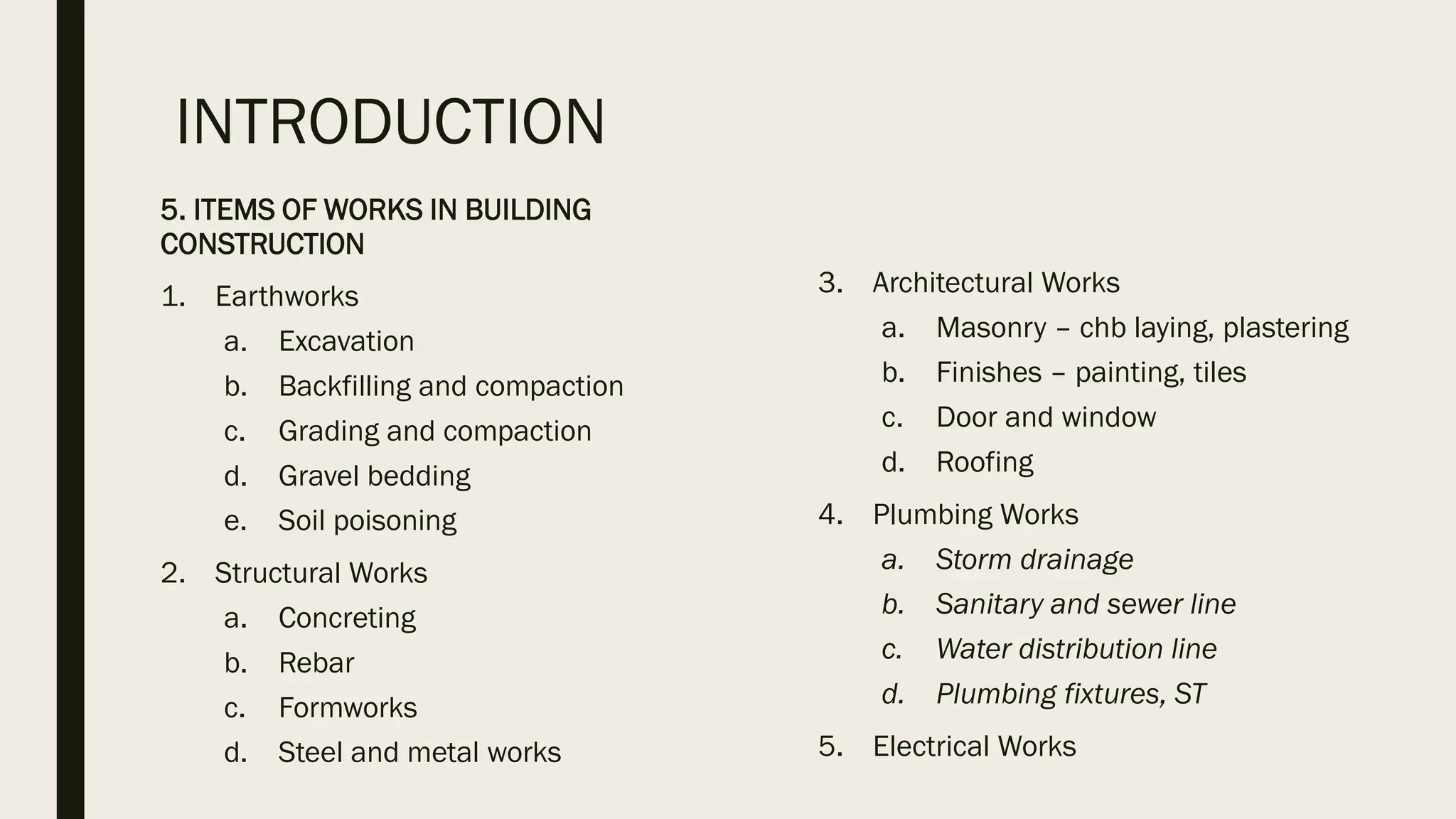The document outlines the role and responsibilities of a quantity surveyor in construction, focusing on cost estimation, project planning, and contract management. It also details essential qualifications, evaluation processes, and the importance of documents such as bills of quantities, specifications, and rate analysis. Additionally, it explains the various types of construction works and the principles of measurement and rate analysis critical for accurate cost management.














